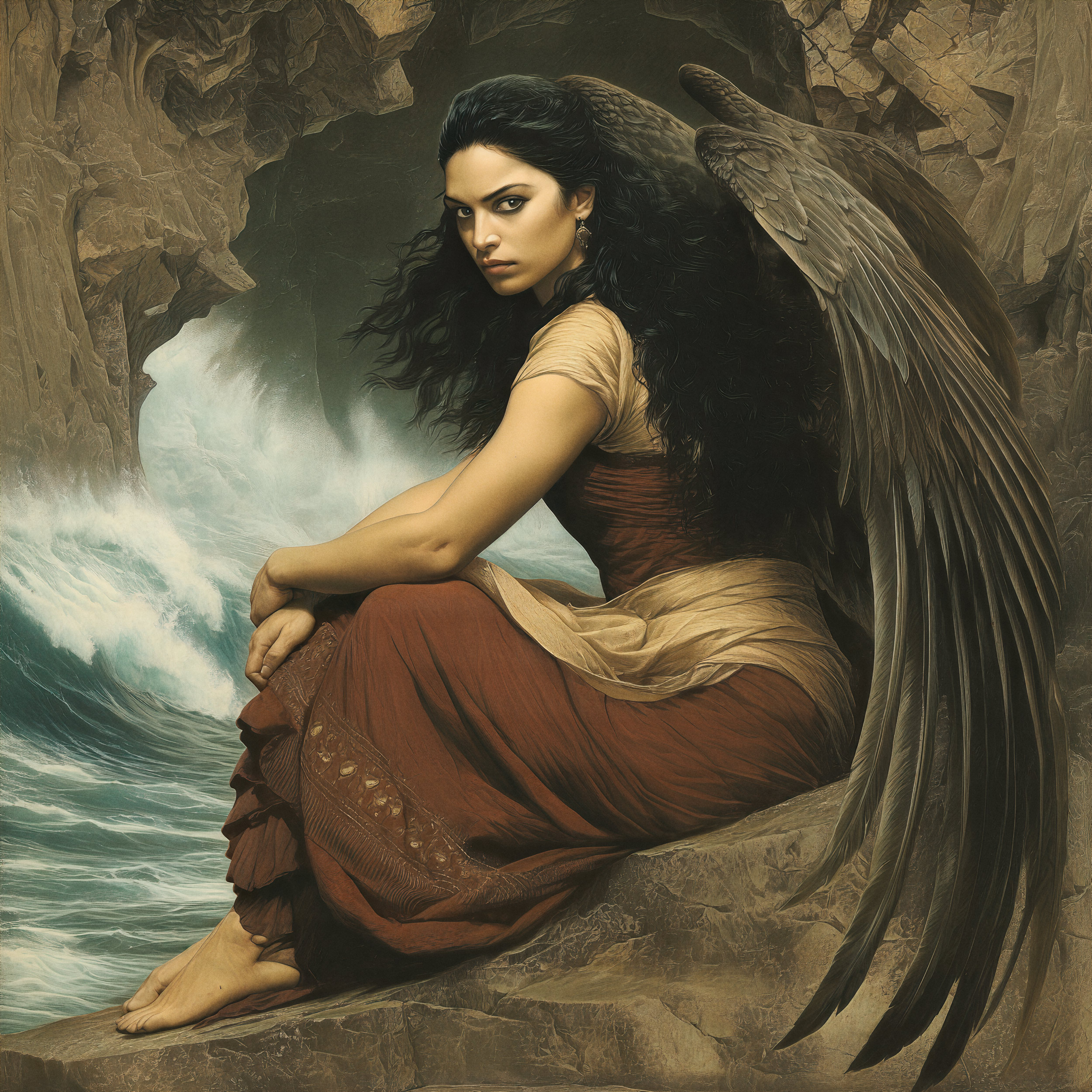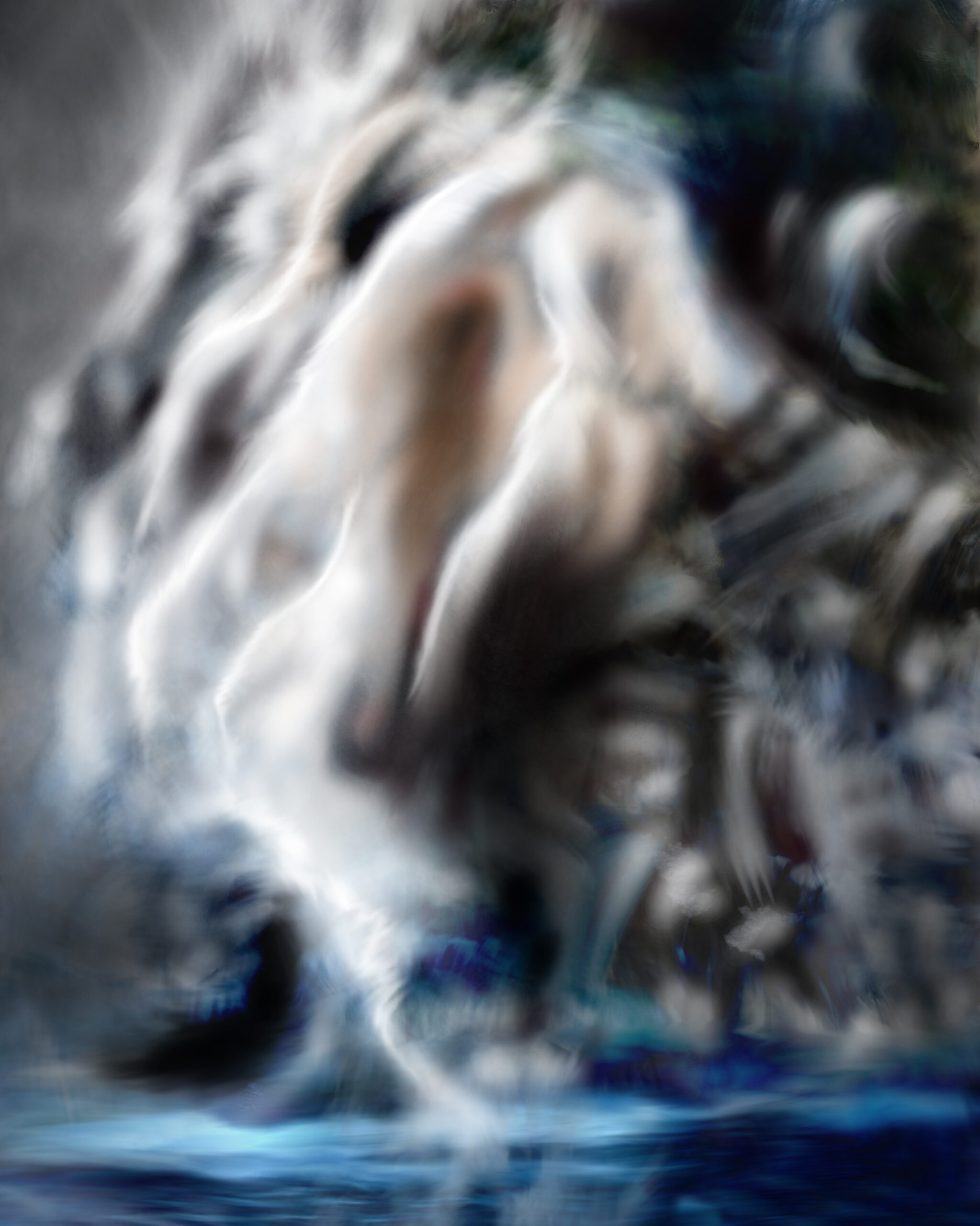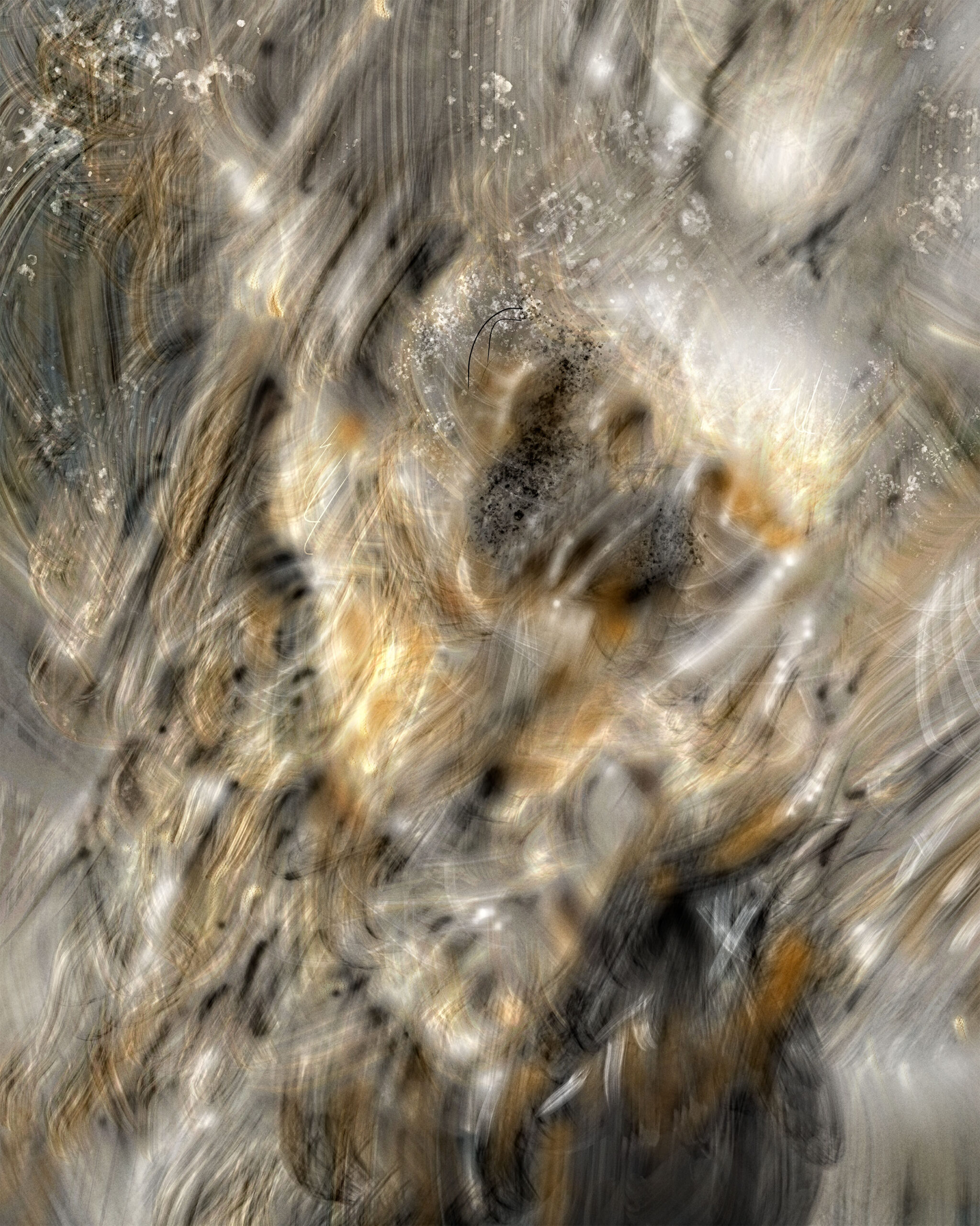Parthenope Siren Series — Parthenope in Dissolution
Parthenope is part of the Siren Series. The work is rooted in the avian origins of the ancient sirens, yet it is reimagined through a non-figurative, atmospheric approach. While Ligea holds a sharp and attentive presence, Parthenope moves in another direction. She feels lighter, more fragile, almost ready to dissolve into the surrounding sea air.
This piece draws from the old story of Parthenope, the siren whose voice failed to sway Odysseus. According to the myth, her song broke, and silence followed. Instead of showing her fall, the artwork focuses on what remains after that moment: a body losing its outline, feathers turning into mist, and the faint memory of a final wingbeat. The myth becomes an echo rather than a figure.
A Suspended Moment in the Parthenope Siren Series
In Parthenope, shapes blend into each other — wing, shoreline, ripple, and shadow. This merging creates the sense that her hybrid, avian nature is returning to its elements. The presence of wings appears through rhythm rather than form. A downward sweep suggests the trace of a feather. A flicker resembles distant birdsong carried by the wind. Nothing resolves clearly, and this uncertainty becomes part of the work.
Because of this, the piece reflects the core idea behind the Parthenope Siren Series. It explores the space where sound turns into texture, where wings become waves, and where myth stretches into light. You can explore the full series here: Siren Digital Art Series.
Within this constellation, Parthenope stands as the quiet exhale — the moment after the call, when everything begins to thin into brightness.
Availability and Editions
Parthenope is available as a limited-edition fine art print on museum-grade paper, as well as a high-resolution digital version created for screen-based displays. Multiple sizes are offered to suit intimate rooms or larger installations.
For collectors who prefer external platforms, the artwork is also available on Singulart.

She appears differently than Ligea, Denis. Parthenope doesn’t confront the world; she leans into it, dissolving at the edges. Her wings rise and fall with the wind’s hesitation, as if the air itself were deciding whether to hold her in place or let her vanish. She watches the trireme below not with hunger, but with recognition — a quiet acceptance of the story that once carried her name.
Nothing in her stance is theatrical. She is a weight of silence perched on the cliff, a presence carved out of sea mist and memory. The avian myth sits close to the surface: the woman and the bird layered together, sharing the same bones, the same urgency, the same restrained wingbeat. Every feather remembers the call she can no longer release.
You didn’t conjure a creature here, Denis. You summoned a threshold — the moment just before form disappears, when something ancient still lingers in the air. Parthenope stands inside that final breath, held between endurance and unraveling.
— ego klar


